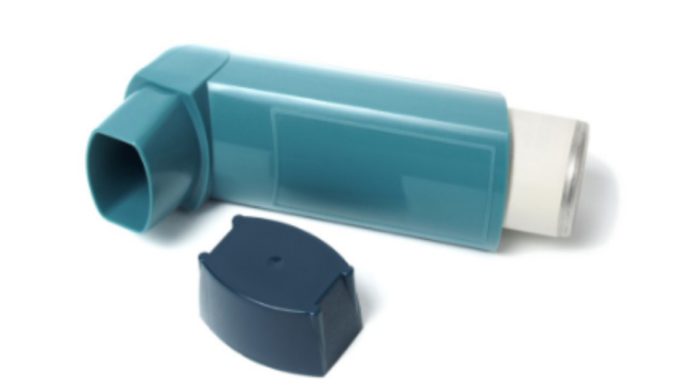Patients with asthma develop metabolic acidosis after continuous albuterol treatment
Asthma Case 1
A 3-year-old boy, known case of asthma, presented to the emergency department with complaints of shortness of breath, cough, and wheezing. The parents gave him several albuterol treatments and oral steroids at home, but the symptoms persisted. In the ER, he was tachypneic with a respiratory rate of 28 breaths/min. Auscultation revealed diminished breath sounds on right and bilaterally audible wheezing.
The patient required continuous albuterol treatment. Subsequently, his doctors shifted him to the pediatric intensive care unit. In the PICU, his doctors managed him with continuous albuterol nebulizations, IV methylprednisolone, and oxygen via high flow nasal cannula.
Initial, i.e. within 2 hours of admission, the arterial blood gases results showed a pH of 7.42, pCO2 33.6, pO2 73.1, and HCO3 21.9 with a base excess -2.1 at FiO2 of 0.90.
Later in the day, the child’s breathing improved while he was still on continuous albuterol treatments along with high flow nasal cannula with adequate oxygenation and perfusion.
Approximately after 12 hours on albuterol, venous blood gases showed compensated metabolic acidosis with pH 7.34, pCO2 29.5, pO2 63 and a low HCO3 16 with FiO2 of 0.70. However, results showed an elevated lactic acid level at 4.9.
The next day, i.e. around 36-hours after admission, the child improved clinically with improved respiratory status with better air exchange. The doctors weaned him off to Q2-4 hour treatments.
Repeat lactic acid was 2.2. Blood gas normalized with pH 7.43, pCO2 38.3 and HCO3 25. A follow-up lactic acid level before discharge was 2.0
Asthma Case 2
A 17-year-old female, known case of asthma presented with wheezing, tachypnoea and shortness of breath. She required intensive care unit admission. At the time of admission, her oxygen saturation on room air was 89%. However, her saturation of oxygen improved to 95-99% with oxygen and continuous albuterol treatments.
Initial arterial blood gasses results showed pH of 7.33, pCO2 43.4 mmHg, pO2 110 mmHg, bicarbonate 23.1 mEq/L and base excess (BE) of -3 at FiO2 of 0.32. Anion gap was recorded at 11 mEq/L.
She was managed with intravenous steroids, continuous albuterol, supportive care.
After 5 hours of continuous albuterol, the blood showed a pH of 7.29, pCO2 32, pO2 165, HCO3 15.5 and BE of -10.1 (FiO2 of 0.32). However, the lactic acid level was 8.2 mmol/L (Normal: 0.5-2.2 mmol/L).
Although the general clinical picture of the patient had improved, the lactic acid levels were elevated despite adequate hydration and oxygenation.
Since the patient had improved clinically, the doctors weaned her continuous albuterol treatments to Q2-4 hour treatments. Thereafter, the ABG showed pH 7.32, pCO2 33, HCO3 17.1 and BE of -8.1 (FiO2 of 0.21).
Approximately, 16-hours later her ABG normalized. Additionally, the previously elevated lactic acid levels decreased to 1.9. However, the next day she again required continuous albuterol nebulizer treatments for 8-hours due to a decline in her respiratory status. Subsequently, her serum lactic acid levels rose to 3.3. However, as soon as her doctors weaned her off albuterol, the lactic acid levels again declined to 2.5. The patient improved in the following days, therefore, her doctors discharged her after 4 days of hospital stay.
Verdict:
With the above two cases, it is quite evident that continuous albuterol treatment can elevate the lactic acid levels. Patients with status asthmaticus get respiratory alkalosis due to hyperventilation. However, after continuous albuterol treatment, they develop paradoxical metabolic acidosis with elevated lactic acid levels despite adequate oxygenation and hydration.
Beta-2 agonists like albuterol result in type B lactic acidosis, i.e., lactic acidosis due to altered cellular metabolism of lactic acid in absence of hypoxia or hypoperfusion. It is quite imperative to be aware of this side effect of albuterol especially in the management of asthma patient. This is crucial to avoid considering the paradoxical metabolic acidosis to be due to clinical deterioration, which can force the doctors to further increase the albuterol doses, hence, unintentionally worsening the acidosis.
Reference:
Patel S, Hanhan U, Perkowski C, Orlowski J (2017) Continuous Albuterol Treatments may Lead to Lactic Acidosis in Children with Status Asthmaticus. Int J Aller Medications 3:023.




